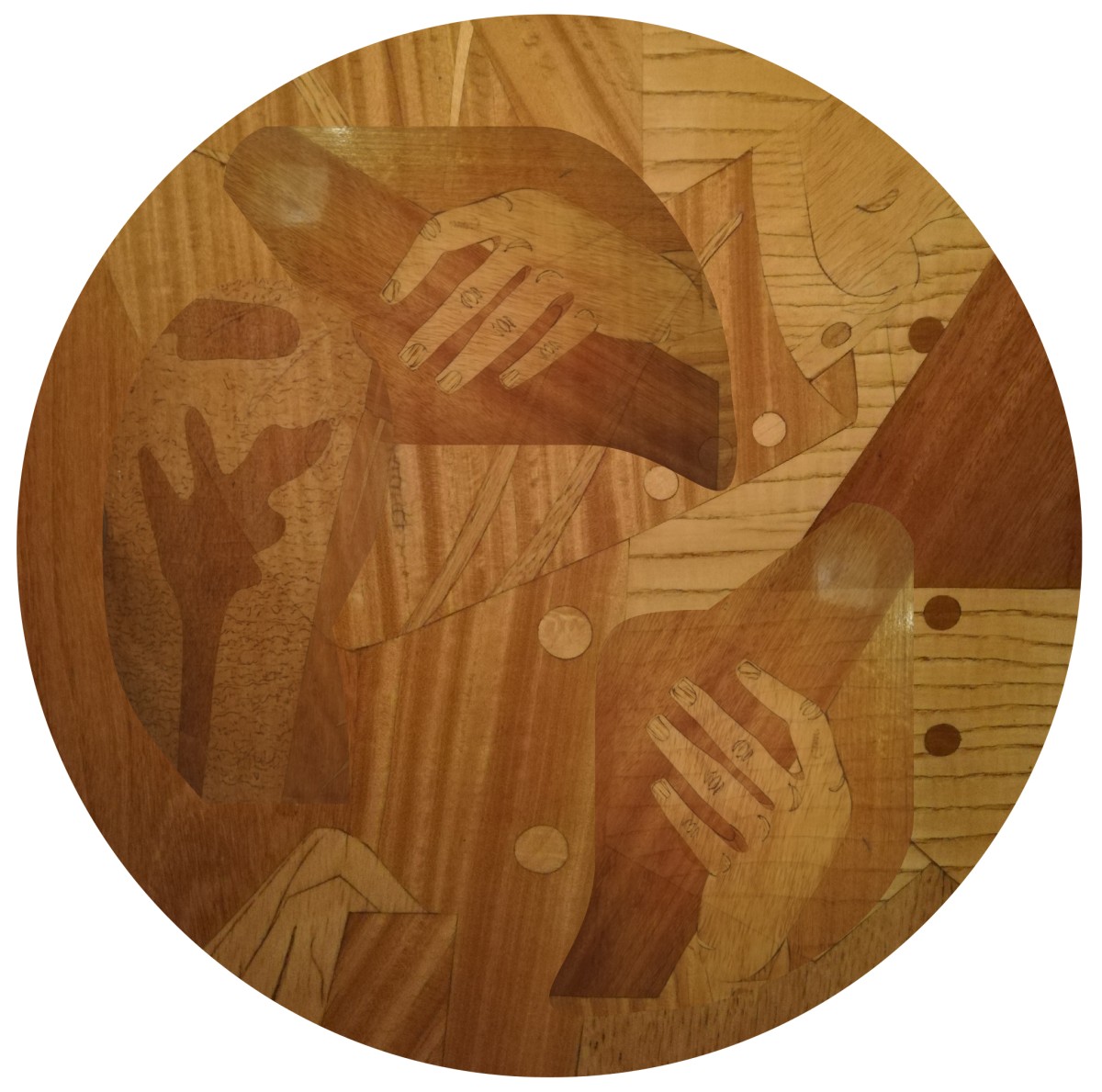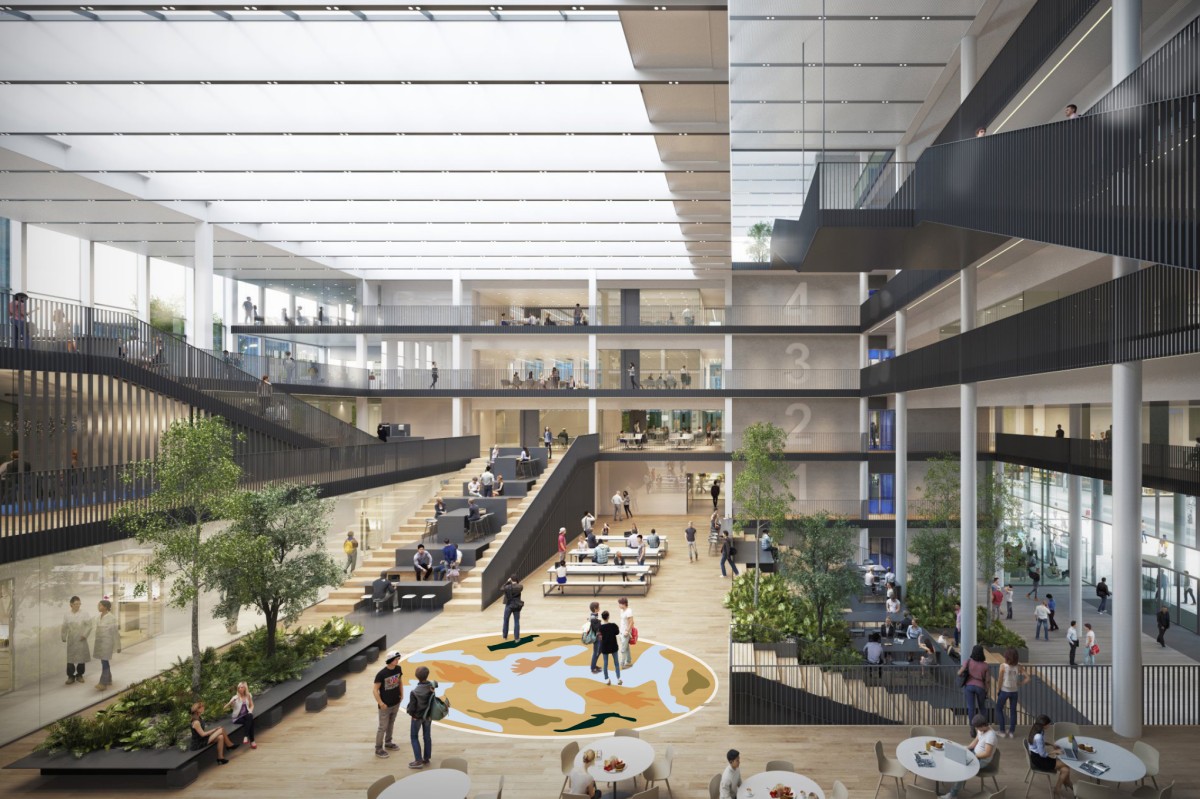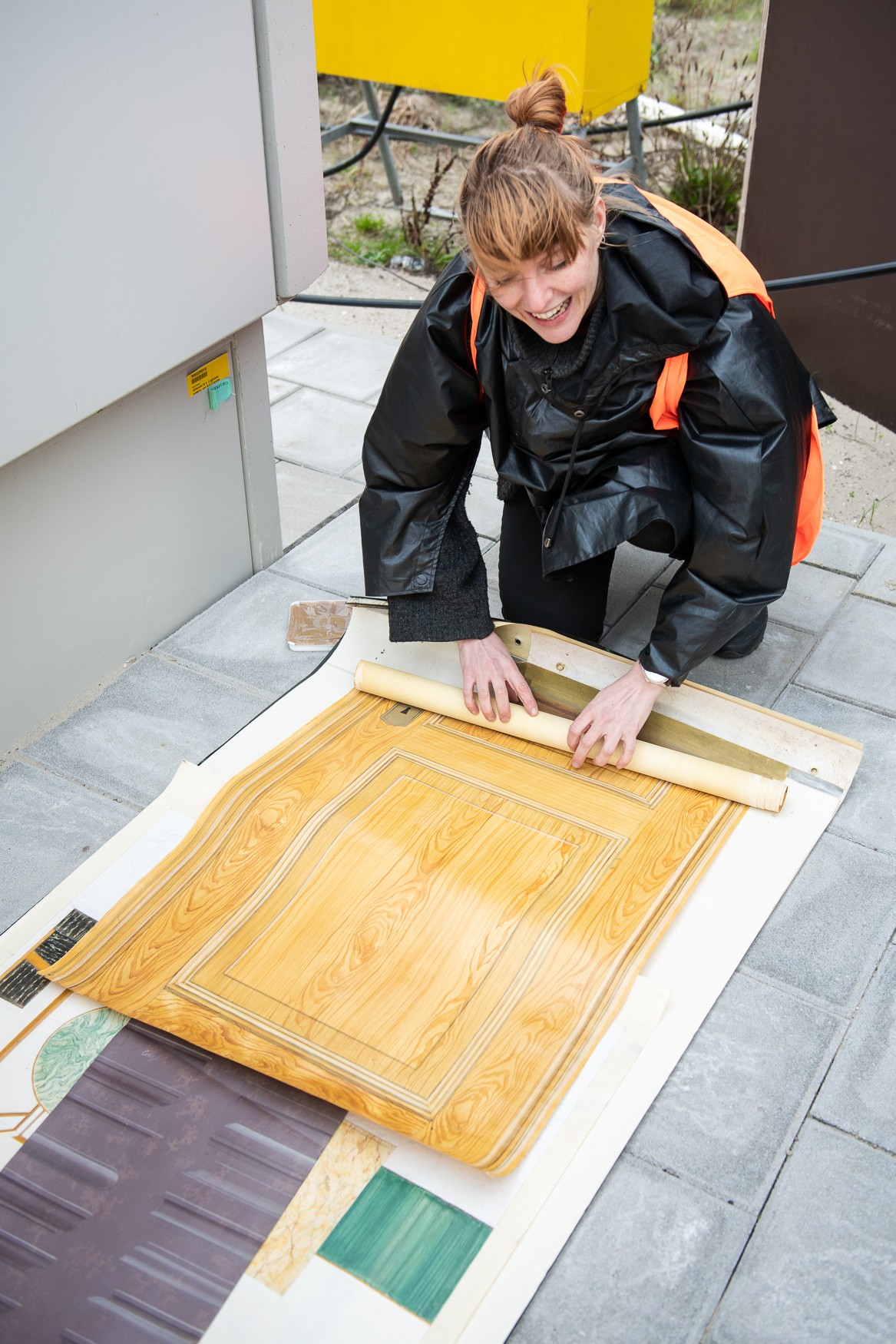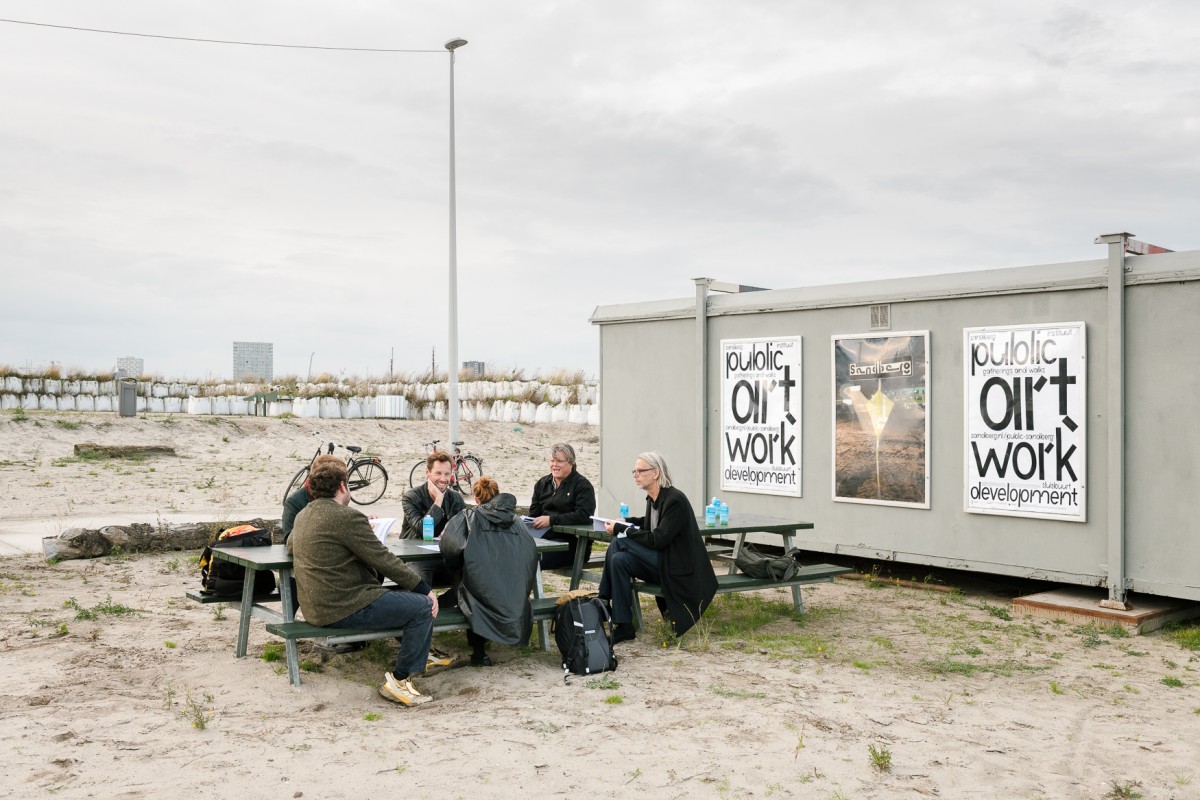The linseed oil schoolyard is about growing flax, harvest the seeds, to produce oil, to make paint and produce work with that paint. A project, or rather long-term engagement, is developed together with the (nelly &) theo van doesburg stichting for Sluisbuurt, a neighbourhood currently under construction in Amsterdam.
The proposal consists of three circles i various sizes sowed with flax placed in between the green areas in Sluisbuurt. Sluisbuurt is envisioned as a green neighbourhood containing 32 towers, ranging from small ones from 22,5 meters high, to tall ones up to 125 meters tall.The circles are proposed to move with the construction of the neighbourhood, a period imagined to be between 10 to 15 years. The provess of shifting sites each year is also favourable for growing the modern flax used today. Only biological seeds will be used. All stages are planned in collaboration with the municipality of Amsterdam, presented and discussed with invited parties such as developers, schools, local artist initiatives on site and executed in collaboration with local farmers, millers and companies with expertise on linseedoil and production of paint. In the final stage the linseed oil will be used, together with pigments created from the site, and developed into painted works. The paintings, «the most useful, artefact» is a proposal of a series of material paintings applied to objects or surfaces in or around the public spaces constructed in the neighbourhood. Imagined materials made from the ground, proposing a new type of archaeology, where objects are not brushed out of the sand but instead materialise from what is grown from it. In a neighbourhood (thought to be) built from scratch, the project makes an argument for looking down instead of up, offering spaces to grow. And in time, a space for new growth, re-growth, or wild growth.
An in situ artwork that propose growth, care and production of a material to take the center stage.
The flax plant (Linum usitatissimum usitatissimum meaning “most useful”) is the origin of linen, a textile that is made from fiber derived from the stem of the flax plant and of linseed oil, an oil made by pressing its seeds. The latin name for the flax plant (linum usitatissimum) means «the most useful» and it can be found used in a wide range of products. The plant has been cultivated commercially for textile, seeds, and oil for over 20 000 years. Linseed oil is a favoured oil for painting because of its drying abilities.
Believing it matters what materials we use, linseedoil paint is one of the earliest components of paint. Historically widely used for buildings before modern paint was developed in close contact with the oil industry. This modern paint has eliminated almost all other paints from the commercial market. And that, according to a study from 2021 by the Swiss organisation EA (earth action), revealed as being possibly the largest source of microplastic leakage into the world’s oceans and waterways, more than the textile and tire industry combined.




introducing (nelly&)theo van doesburg foundations’ publicart work programme
since 1987 the theo van doesburg foundation strives to realise visual art projects and initiate formats that generate positions and commissions for emerging- and early career artists that studied or resided in amsterdam. based on the placemaking terrain of sluisbuurt in amsterdam since 2011, the foundation collaborates with artists to develop scenarios for different public art works in the neighbourhood currently still under construction. parallel to the building process a public programme introduces neighbours, property developers, investors and other stakeholders with ideas on six themes that are key to the identity of the new neighbourhood sluisbuurt.

construction site conversations
artists thorben grobel (spazio cura), annee grøtte viken, kitty maria van ekeren, elise ehry, franziska goralski, carly rose bedford, aaro murphy and philip coyne collaborate with the (nelly&)theo van doesburg foundation on their unsolicited ideas for cultural development for the yet to be built neighbourhood in the capital of the netherlands.
each directed towards a different organisation, company or property developer, the proposals tackle six different sites and topics. the (nelly&)theo van doesburg foundation seeks investment for further development and production of these public art works. the process is curated by project space reneenee and jules van den langenberg.

(Nelly&)Theo van Doesburg Foundation in collaboration with Sluislab, Inholland Universities, Gerrit Rietveld Academie and Sandberg Instituut present a series of gatherings on the construction site of Amsterdam's newest city quarter Sluisbuurt.
Join the upcoming Public Art Work Development Edition 5, Friday 25 November 2022 from 15:00-17:00
Artists Thorben Grobel (Spazio Cura), Annee Grøtte Viken, Kitty Maria van Ekeren, Elise Ehry, Franziska Goralski, Carly Rose Bedford, Aaro Murphy and Phil Coyne present their unsolicited ideas for public art work development for the yet to be built neighbourhood in the capital of The Netherlands. BPD Culture fund director Sharon Oldenkotte shares some of her experiences of the collaboration with artist Bin Koh and the (Nelly&)Theo van Doesburg that realised a permanent public art work in the neighbouring Sportheldenbuurt.
Each geared towards a different organisation, company or property developer, the proposals tackle six different sites and topics.
(Nelly&)Theo van Doesburg Foundations is open to donations and seeks investment for further development and production of the public art works.
The process is curated by project space Reneenee and Jules van den Langenberg.
download the public art work proposal and get in touch via nadine@theovandoesburgstichting.nl to join the development or sponsor the further realisation of the work.